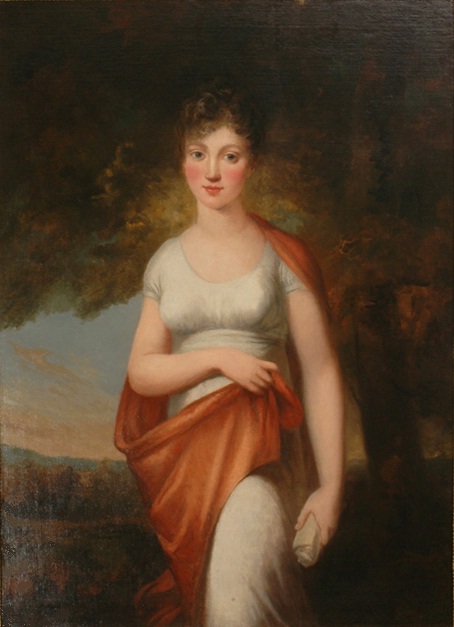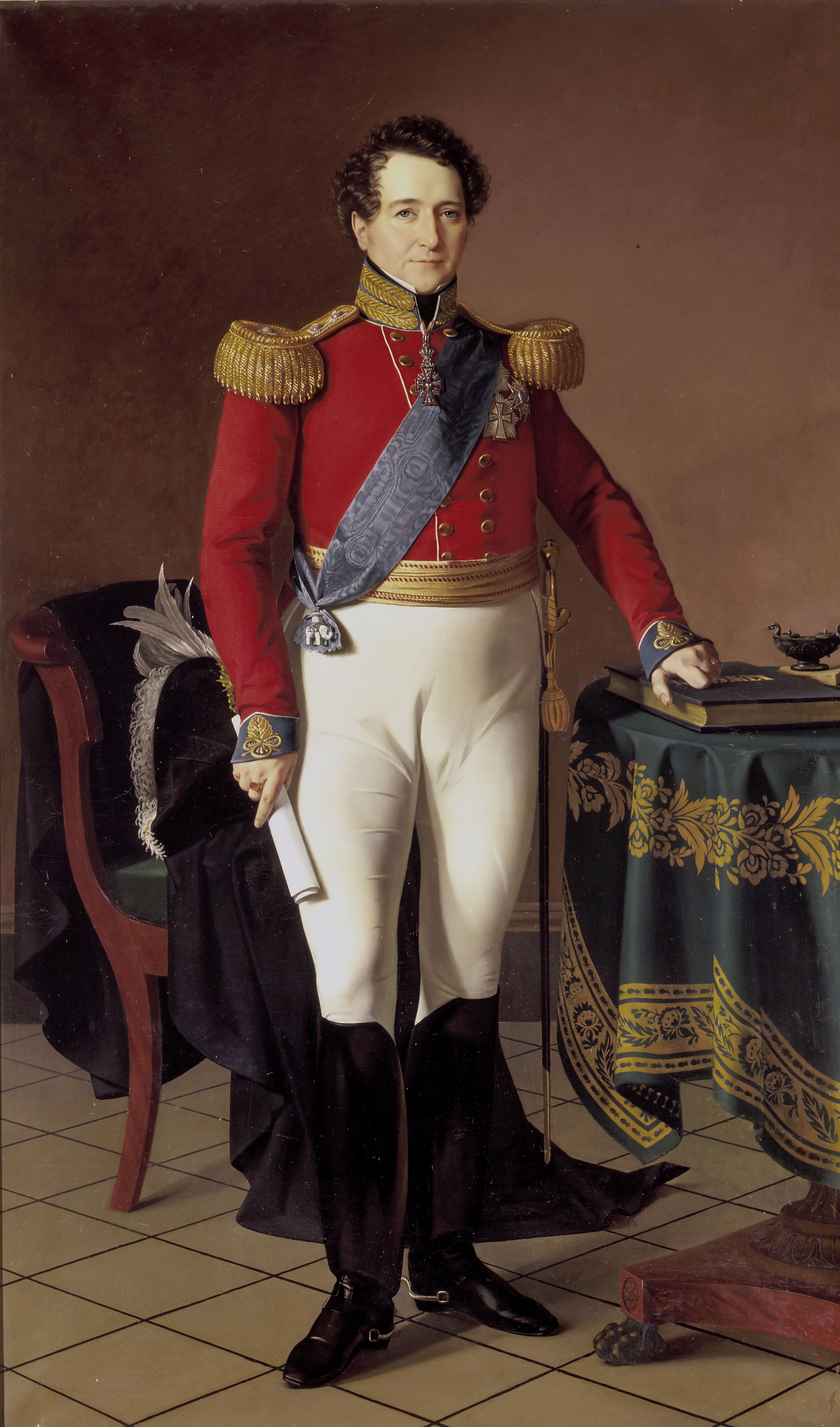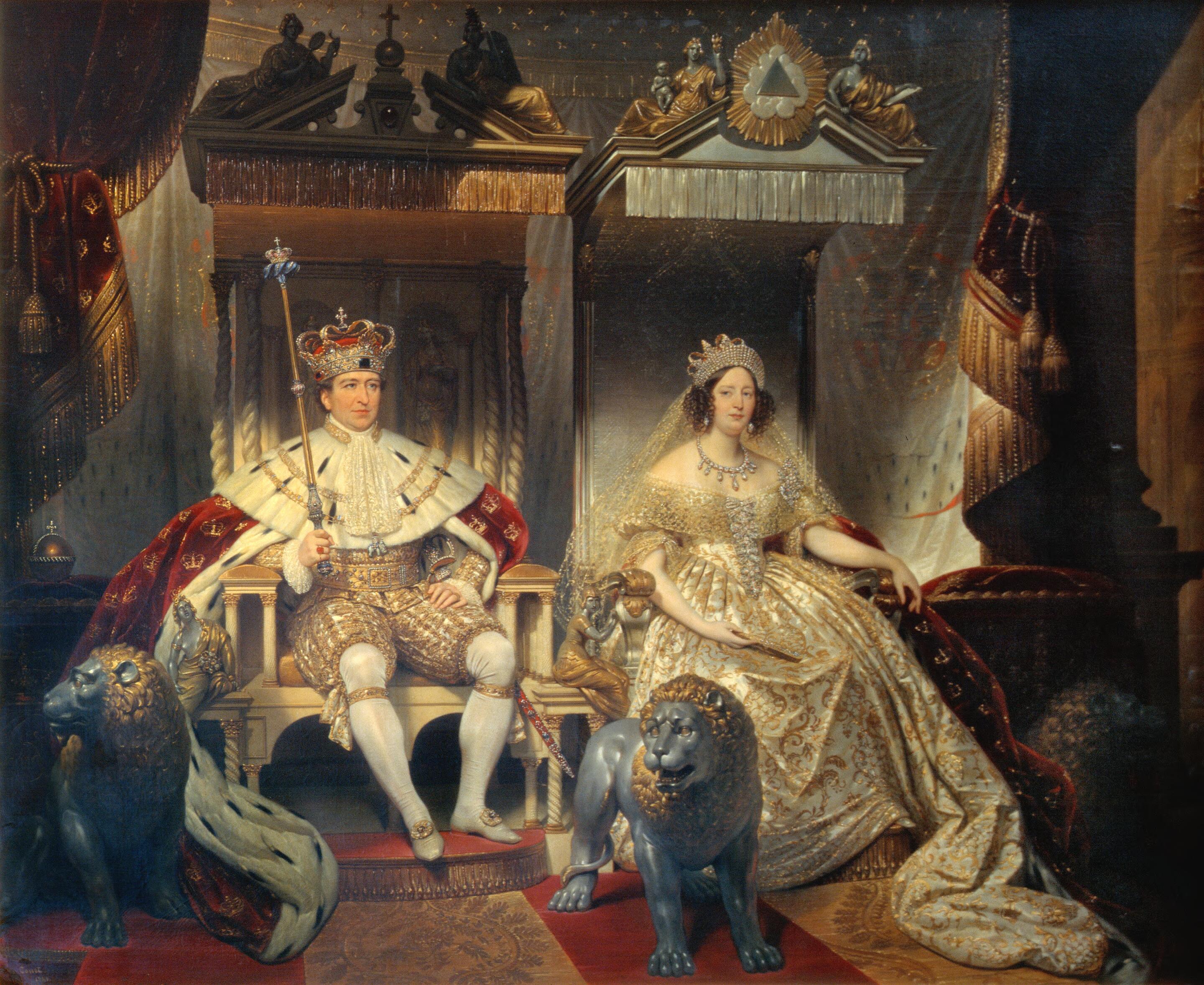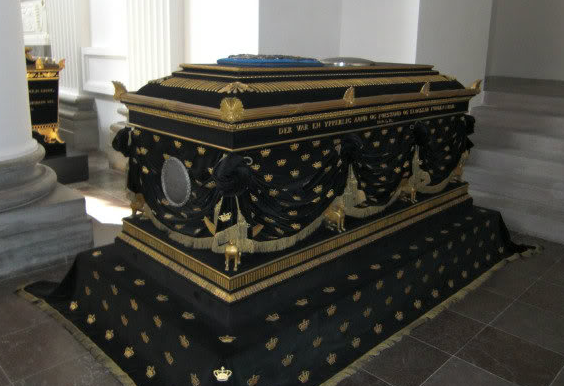Christian VIII of Denmark on:
[Wikipedia]
[Google]
[Amazon]
Christian VIII (18 September 1786 – 20 January 1848) was King of Denmark from 1839 to 1848 and, as Christian Frederick, King of Norway in 1814.
Christian Frederick was the eldest son of Hereditary Prince Frederick, a younger son of King Frederick V of Denmark and Norway. As his cousin, King Frederick VI had no sons, Christian Frederick was
 Prince Christian Frederick of Denmark and Norway was born on 18 September 1786 at
Prince Christian Frederick of Denmark and Norway was born on 18 September 1786 at
 Prince Christian Frederick spent the first years of his life with his siblings in the vast and magnificent
Prince Christian Frederick spent the first years of his life with his siblings in the vast and magnificent
 On a visit to his mother's relatives in
On a visit to his mother's relatives in
 In May 1813, as the
In May 1813, as the  Sweden refused Christian's conditions and a short military campaign ensued in which the Norwegian army was defeated by the forces of the Swedish crown prince Charles John. The brief war concluded with the Convention of Moss on 14 August 1814. By the terms of this treaty, King Christian Frederick transferred executive power to the Storting, then abdicated the throne and returned to Denmark. The Storting in its turn adopted the constitutional amendments necessary to allow for a personal union with Sweden and on 4 November elected Charles XIII of Sweden as the new king of Norway, Charles II.
Sweden refused Christian's conditions and a short military campaign ensued in which the Norwegian army was defeated by the forces of the Swedish crown prince Charles John. The brief war concluded with the Convention of Moss on 14 August 1814. By the terms of this treaty, King Christian Frederick transferred executive power to the Storting, then abdicated the throne and returned to Denmark. The Storting in its turn adopted the constitutional amendments necessary to allow for a personal union with Sweden and on 4 November elected Charles XIII of Sweden as the new king of Norway, Charles II.
 Upon his return to Denmark, Christian married his second wife, Princess
Upon his return to Denmark, Christian married his second wife, Princess
 On 3 December 1839 he ascended the Danish throne as Christian VIII. The Liberal party had high hopes of "the giver of constitutions." However, by this time, Christian had become more conservative, and disappointed his admirers by steadily rejecting every Liberal project. Administrative reform was the only reform he would promise. In his attitude to the growing national unrest in the twin duchies of Schleswig and Holstein he often seemed hesitant and half-hearted, which damaged his position there. It was not until 1846 that he clearly supported the idea of Schleswig being a Danish area.
King Christian VIII continued his predecessor's patronage of
On 3 December 1839 he ascended the Danish throne as Christian VIII. The Liberal party had high hopes of "the giver of constitutions." However, by this time, Christian had become more conservative, and disappointed his admirers by steadily rejecting every Liberal project. Administrative reform was the only reform he would promise. In his attitude to the growing national unrest in the twin duchies of Schleswig and Holstein he often seemed hesitant and half-hearted, which damaged his position there. It was not until 1846 that he clearly supported the idea of Schleswig being a Danish area.
King Christian VIII continued his predecessor's patronage of  King Christian died of
King Christian died of
p. 27
(in Danish). Retrieved 2 April 2020
The Royal Lineage
at the website of the Danish Monarchy
Christian VIII
at the website of the
heir presumptive
An heir presumptive is the person entitled to inherit a throne, peerage, or other hereditary honour, but whose position can be displaced by the birth of an heir apparent or a new heir presumptive with a better claim to the position in question. ...
to the throne from 1808.
Early years
Birth and family
 Prince Christian Frederick of Denmark and Norway was born on 18 September 1786 at
Prince Christian Frederick of Denmark and Norway was born on 18 September 1786 at Christiansborg Palace
Christiansborg Palace ( da, Christiansborg Slot; ) is a palace and government building on the islet of Slotsholmen in central Copenhagen, Denmark. It is the seat of the Danish Parliament ('), the Danish Prime Minister's Office, and the Supreme ...
, the principal residence of the Danish Monarchy on the island of Slotsholmen
Slotsholmen (English: The Castle Islet) is an island in the harbour of Copenhagen, Denmark, and part of Copenhagen Inner City. The name is taken from the successive castles and palaces located on the island since Bishop Absalon constructed the c ...
in central Copenhagen
Copenhagen ( or .; da, København ) is the capital and most populous city of Denmark, with a proper population of around 815.000 in the last quarter of 2022; and some 1.370,000 in the urban area; and the wider Copenhagen metropolitan a ...
. He was officially the eldest son of Hereditary Prince Frederick of Denmark and Norway and Duchess Sophia Frederica of Mecklenburg-Schwerin. His father was a younger son of the deceased King Frederick V of Denmark-Norway and his second wife, Duchess Juliana Maria of Brunswick-Wolfenbüttel, and his mother was a daughter of Duke Louis of Mecklenburg-Schwerin.
In the family, however, it was widely acknowledged that the biological father most likely was the Hereditary Prince's aide-de-camp and hofmarschall . In a letter written by Crown Prince Frederick to his brother-in-law Duke Frederick Christian II of Augustenburg in 1805, he thus mentions the Hereditary Prince's goodwill towards his hofmarschall and continues:
When Prince Christian Frederick was born, his father's half-brother, Christian VII, was the King of Denmark-Norway, but due to the king's mental illness, he was not able to rule himself. From 1772, Hereditary Prince Frederick had ruled together with his mother, the Dowager Queen Juliane Marie, and their adviser Ove Høegh-Guldberg. In 1784, however, the king's only son, the young Crown Prince Frederick (later King Frederick VI), had seized power in a palace revolution and was now the real ruler. In Prince Christian Frederick's childhood, his family had a strained relationship with the Crown Prince and his family as a result of these power struggles, but gradually the relationship between the two branches of the royal family was normalized.
Childhood and education
 Prince Christian Frederick spent the first years of his life with his siblings in the vast and magnificent
Prince Christian Frederick spent the first years of his life with his siblings in the vast and magnificent Baroque
The Baroque (, ; ) is a style of architecture, music, dance, painting, sculpture, poetry, and other arts that flourished in Europe from the early 17th century until the 1750s. In the territories of the Spanish and Portuguese empires including ...
Christiansborg Palace
Christiansborg Palace ( da, Christiansborg Slot; ) is a palace and government building on the islet of Slotsholmen in central Copenhagen, Denmark. It is the seat of the Danish Parliament ('), the Danish Prime Minister's Office, and the Supreme ...
. As the family's summer residence, Hereditary Prince Friedrich in 1789 bought the smaller and elegant country house, Sorgenfri Palace
Sorgenfri Palace ( da, Sorgenfri Slot; lit. "Sorrow free", a direct calque of Sans Souci) is a royal residence of the Danish monarch, located in Lyngby-Taarbæk Municipality, on the east side of Lyngby Kongevej, in the northern suburbs of Copenh ...
, on the banks of the small river Mølleåen in Kongens Lyngby
Kongens Lyngby (, Danish for "the King's Heather Town"; short form Lyngby) is the seat and commercial centre of Lyngby-Taarbæk Municipality in the northern suburbs of Copenhagen, Denmark. Lyngby Hovedgade is a busy shopping street and the site ...
, north of Copenhagen. On 26 February 1794, the family lost their Copenhagen home, as Christiansborg Palace was devastated by a fire. Instead the Hereditary Prince bought the '' Levetzau's Palace'', an 18th-century town house which forms part of the Amalienborg Palace complex in the district Frederiksstaden in central Copenhagen
Copenhagen ( or .; da, København ) is the capital and most populous city of Denmark, with a proper population of around 815.000 in the last quarter of 2022; and some 1.370,000 in the urban area; and the wider Copenhagen metropolitan a ...
. In november of the same year, when he was eight years old, his mother, who had long suffered from a fragile health, died at Sorgenfri the age of just 36 years.
Christian Frederick was raised conservatively according to the guidelines of minister Ove Høegh-Guldberg, who had been ousted from government in 1784 along with the hereditary prince. His upbringing was marked by a thorough and broad-spectrum education with exposure to artists and scientists who were linked to his father's court. He inherited the talents of his highly gifted mother, and his love of science and art was instilled at an early age and would follow him throughout his life. His amiability and handsome features are said to have made him very popular in Copenhagen
Copenhagen ( or .; da, København ) is the capital and most populous city of Denmark, with a proper population of around 815.000 in the last quarter of 2022; and some 1.370,000 in the urban area; and the wider Copenhagen metropolitan a ...
.
He was confirmed on 22 May 1803 in the chapel of Frederiksberg Palace together with his sisters Princess Juliane Sophie and Princess Louise Charlotte. A year and a half later, on 7 December 1805, the children's father, Hereditary Prince Frederick, died at the age of 52, and the nineteen-year-old Prince Christian Frederik inherited his place as second-in-line in the succession as well as the two residences, Levetzau's Palace and Sorgenfri Palace. As King Christian VII died on 13 March 1808, Crown Prince Frederick became king of Denmark and Norway as Frederick VI. Since the new king still had no male descendants, Christian Frederick thus became heir presumptive
An heir presumptive is the person entitled to inherit a throne, peerage, or other hereditary honour, but whose position can be displaced by the birth of an heir apparent or a new heir presumptive with a better claim to the position in question. ...
to the throne.
First marriage
 On a visit to his mother's relatives in
On a visit to his mother's relatives in Mecklenburg
Mecklenburg (; nds, label= Low German, Mękel(n)borg ) is a historical region in northern Germany comprising the western and larger part of the federal-state Mecklenburg-Western Pomerania. The largest cities of the region are Rostock, Schweri ...
, Prince Christian Frederick stayed at his uncle's court in Schwerin, where he fell in love with his cousin, Duchess Charlotte Frederica of Mecklenburg-Schwerin. Charlotte Frederica was a daughter of the reigning Duke Friedrich Franz I of Mecklenburg-Schwerin, and Princess Louise of Saxe-Gotha-Altenburg. They married two years later, on 21 June 1806, at Ludwigslust.
The young couple first settled at Plön Castle in the Duchy of Holstein. It was here, that Charlotte Frederica gave birth to their first-born son, Prince Christian Frederick, who was born and died on 8 April 1807. From 1808 the couple lived in Copenhagen, where they took residence partly at Levetzau's Palace at Amalienborg, and partly at Sorgenfri Palace. On 6 October 1808, their second son and only surviving child was born, Prince Frederick Carl Christian, the future King Frederick VII of Denmark.
Nonetheless, their married life was unhappy. Charlotte Frederica was described as very beautiful in her youth, but her character was thought to be moody, capricious, frivolous and mythomaniac, qualities that were later said to recur in her son, Frederick VII. Her alleged affair with her singing teacher, Swiss-born singer and composer Édouard Du Puy, led to her removal from the court. For this reason, her husband divorced her in 1810, sent her into internal exile in the town of Horsens, and prohibited her from ever seeing her son again.
King of Norway
 In May 1813, as the
In May 1813, as the heir presumptive
An heir presumptive is the person entitled to inherit a throne, peerage, or other hereditary honour, but whose position can be displaced by the birth of an heir apparent or a new heir presumptive with a better claim to the position in question. ...
of the kingdoms of Denmark and Norway, Christian was sent as ''stattholder'' ( Governor-general of Norway) to Norway to promote the loyalty of the Norwegians to the House of Oldenburg, which had been very badly shaken by the disastrous results of Frederick VI's adhesion to the falling fortunes of Napoleon I of France. Christian did all he could personally to strengthen the bonds between the Norwegians and the royal house of Denmark. Though his endeavours were opposed by the so-called Swedish party, which desired a dynastic union with Sweden
Sweden, formally the Kingdom of Sweden,The United Nations Group of Experts on Geographical Names states that the country's formal name is the Kingdom of SwedenUNGEGN World Geographical Names, Sweden./ref> is a Nordic countries, Nordic c ...
, he placed himself at the head of the Norwegian party of independence after the Treaty of Kiel had forced the king to cede Norway
Norway, officially the Kingdom of Norway, is a Nordic countries, Nordic country in Northern Europe, the mainland territory of which comprises the western and northernmost portion of the Scandinavian Peninsula. The remote Arctic island of ...
to the king of Sweden. He was elected Regent of Norway by an assembly of notables
An Assembly of Notables (French: ''Assemblée des notables'') was a group of high-ranking nobles, ecclesiastics, and state functionaries convened by the King of France on extraordinary occasions to consult on matters of state. Assemblymen were ...
on 16 February 1814.
This election was confirmed by the Norwegian Constituent Assembly convoked at Eidsvoll
Eidsvoll (; sometimes written as ''Eidsvold'') is a municipality in Akershus in Viken county, Norway. It is part of the Romerike traditional region. The administrative centre of the municipality is the village of Sundet.
General information
...
on 10 April, and on 17 May the constitution was signed and Christian was unanimously elected king of Norway under the name Christian Frederick (Kristian Frederik in Norwegian).
Christian next attempted to interest the great powers in Norway's cause, but without success. On being pressed by the commissioners of the allied powers to bring about a union between Norway and Sweden in accordance with the terms of the treaty of Kiel, and then return to Denmark, he replied that, as a constitutional king, he could do nothing without the consent of the parliament (Storting
The Storting ( no, Stortinget ) (lit. the Great Thing) is the supreme legislature of Norway, established in 1814 by the Constitution of Norway. It is located in Oslo. The unicameral parliament has 169 members and is elected every four years ...
), which would not be convoked until there was a suspension of hostilities on the part of Sweden.
 Sweden refused Christian's conditions and a short military campaign ensued in which the Norwegian army was defeated by the forces of the Swedish crown prince Charles John. The brief war concluded with the Convention of Moss on 14 August 1814. By the terms of this treaty, King Christian Frederick transferred executive power to the Storting, then abdicated the throne and returned to Denmark. The Storting in its turn adopted the constitutional amendments necessary to allow for a personal union with Sweden and on 4 November elected Charles XIII of Sweden as the new king of Norway, Charles II.
Sweden refused Christian's conditions and a short military campaign ensued in which the Norwegian army was defeated by the forces of the Swedish crown prince Charles John. The brief war concluded with the Convention of Moss on 14 August 1814. By the terms of this treaty, King Christian Frederick transferred executive power to the Storting, then abdicated the throne and returned to Denmark. The Storting in its turn adopted the constitutional amendments necessary to allow for a personal union with Sweden and on 4 November elected Charles XIII of Sweden as the new king of Norway, Charles II.
Danish heir presumptive
Second marriage
 Upon his return to Denmark, Christian married his second wife, Princess
Upon his return to Denmark, Christian married his second wife, Princess Caroline Amalie of Schleswig-Holstein-Sonderburg-Augustenburg
Caroline Amalie of Schleswig-Holstein-Sonderburg-Augustenburg (28 June 1796 – 9 March 1881) was Queen of Denmark as the second spouse of King Christian VIII between 1839 and 1848.
Life
Early life
Caroline Amalie was the daughter of Frederi ...
(daughter of Louise Augusta of Denmark, the only sister of Frederick VI) at Augustenborg Palace
Augustenborg Palace (or Augustenborg Castle; da, Augustenborg Slot, german: Schloss Augustenburg) is a Rococo-style palace in the southwestern part of Augustenborg, Als Island, Denmark, overlooking Augustenborg Fjord. The palace owes its name t ...
on 22 May 1815. The couple was childless and lived in comparative retirement as leaders of the literary and scientific society of Copenhagen until Christian ascended the throne of Denmark.
Christian had ten extramarital children, for whom he carefully provided. It has been suggested that these extramarital children included the fairy tale author Hans Christian Andersen, though there is little evidence to support this.
King of Denmark
 On 3 December 1839 he ascended the Danish throne as Christian VIII. The Liberal party had high hopes of "the giver of constitutions." However, by this time, Christian had become more conservative, and disappointed his admirers by steadily rejecting every Liberal project. Administrative reform was the only reform he would promise. In his attitude to the growing national unrest in the twin duchies of Schleswig and Holstein he often seemed hesitant and half-hearted, which damaged his position there. It was not until 1846 that he clearly supported the idea of Schleswig being a Danish area.
King Christian VIII continued his predecessor's patronage of
On 3 December 1839 he ascended the Danish throne as Christian VIII. The Liberal party had high hopes of "the giver of constitutions." However, by this time, Christian had become more conservative, and disappointed his admirers by steadily rejecting every Liberal project. Administrative reform was the only reform he would promise. In his attitude to the growing national unrest in the twin duchies of Schleswig and Holstein he often seemed hesitant and half-hearted, which damaged his position there. It was not until 1846 that he clearly supported the idea of Schleswig being a Danish area.
King Christian VIII continued his predecessor's patronage of astronomy
Astronomy () is a natural science that studies celestial objects and phenomena. It uses mathematics, physics, and chemistry in order to explain their origin and evolution. Objects of interest include planets, moons, stars, nebulae, g ...
, awarding gold medals for the discovery of comet
A comet is an icy, small Solar System body that, when passing close to the Sun, warms and begins to release gases, a process that is called outgassing. This produces a visible atmosphere or coma, and sometimes also a tail. These phenomena ...
s by telescope
A telescope is a device used to observe distant objects by their emission, absorption, or reflection of electromagnetic radiation. Originally meaning only an optical instrument using lenses, curved mirrors, or a combination of both to obse ...
and financially supporting Heinrich Christian Schumacher
Prof Heinrich Christian Schumacher FRS(For) FRSE (3 September 1780 – 28 December 1850) was a German-Danish astronomer and mathematician.
Biography
Schumacher was born at Bramstedt, in Holstein, near the German/Danish border. He was educat ...
with his publication of the scientific journal ''Astronomische Nachrichten
''Astronomische Nachrichten'' (''Astronomical Notes''), one of the first international journals in the field of astronomy, was established in 1821 by the German astronomer Heinrich Christian Schumacher. It claims to be the oldest astronomical journ ...
''. It was during his reign that the last remnants of Danish India, namely Tranquebar in the south and Serampore
Serampore (also called ''Serampur'', ''Srirampur'', ''Srirampore'', ''Shreerampur'', ''Shreerampore'', ''Shrirampur'' or ''Shrirampore'') is a city of Hooghly district in the Indian state of West Bengal. It is the headquarter of the Srirampore ...
in Bengal, were sold to the British in 1845.
His only legitimate son, the future Frederick VII (1808–1863) was married three times, but produced no legitimate issue. Since he was apparently unlikely to beget heirs, Christian wished to avert a succession crisis. Christian commenced arrangements to secure the succession in Denmark. The result was the selection of the future Christian IX
Christian IX (8 April 181829 January 1906) was King of Denmark from 1863 until his death in 1906. From 1863 to 1864, he was concurrently Duke of Schleswig, Holstein and Lauenburg.
A younger son of Frederick William, Duke of Schleswig-Holstein ...
as hereditary prince, the choice made official by a new law enacted on 31 July 1853 after an international treaty made in London.
 King Christian died of
King Christian died of sepsis
Sepsis, formerly known as septicemia (septicaemia in British English) or blood poisoning, is a life-threatening condition that arises when the body's response to infection causes injury to its own tissues and organs. This initial stage is follo ...
in Amalienborg Palace in 1848 and was interred in Roskilde Cathedral. Some historians and biographers believe that King Christian would have given Denmark a free constitution had he lived long enough; his last words are sometimes recorded as "I didn't make it". (''Jeg nåede det ikke'')
Honours
He received the following orders and decorations:''Kongelig Dansk Hof-og Statscalender Statshaandbog for det danske Monarchie for Aaret 1847''p. 27
(in Danish). Retrieved 2 April 2020
Notes
Ancestry
References
Citations
Bibliography
* * * * * * * * *Obituary (astronomy)
External links
The Royal Lineage
at the website of the Danish Monarchy
Christian VIII
at the website of the
Royal Danish Collection
Royal may refer to:
People
* Royal (name), a list of people with either the surname or given name
* A member of a royal family
Places United States
* Royal, Arkansas, an unincorporated community
* Royal, Illinois, a village
* Royal, Iowa, a cit ...
at Rosenborg Castle
*
{{Authority control
1786 births
1848 deaths
Christian Frederick
Christian VIII (18 September 1786 – 20 January 1848) was King of Denmark from 1839 to 1848 and, as Christian Frederick, King of Norway in 1814.
Christian Frederick was the eldest son of Hereditary Prince Frederick, a younger son of King Frederic ...
Dukes of Saxe-Lauenburg
Dukes of Schleswig
Dukes of Holstein
House of Oldenburg in Denmark
Grand Commanders of the Order of the Dannebrog
Recipients of the Cross of Honour of the Order of the Dannebrog
Knights of the Golden Fleece of Spain
3
3
3
Grand Crosses of the Order of Saint Stephen of Hungary
Burials at Roskilde Cathedral
Christian Frederick
Christian VIII (18 September 1786 – 20 January 1848) was King of Denmark from 1839 to 1848 and, as Christian Frederick, King of Norway in 1814.
Christian Frederick was the eldest son of Hereditary Prince Frederick, a younger son of King Frederic ...
Christian Frederick
Christian VIII (18 September 1786 – 20 January 1848) was King of Denmark from 1839 to 1848 and, as Christian Frederick, King of Norway in 1814.
Christian Frederick was the eldest son of Hereditary Prince Frederick, a younger son of King Frederic ...
19th-century monarchs of Denmark
Monarchs who abdicated